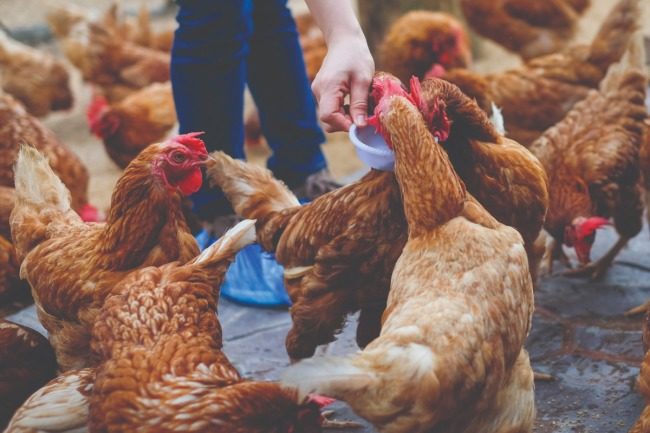WAGENINGEN, NETHERLANDS – Lasers have many applications across industries – from the military, to manufacturing, from medicine to – poultry protection?
Results from experiments performed by Wageningen Bioveterinary Research (WBVR) in Lelystad, Netherlands, found that lasers prevented nearly all visits by wild waterfowl to a free-range poultry operation that had been the site of several avian influenza (AI) outbreaks. This approach to AI prevention could be especially helpful during the period from October to March when migration of wild birds – and the potential to spread viruses – reaches its highest point.
Outbreaks of HPAI H5 have been on the rise since August 2020, and the epidemic continues to progress. Between Jan. 15, 2021, and Feb. 4, 2021, 410 new highly pathogenic avian influenza (HPAI) outbreaks in domestic birds and 233 new outbreaks in non-poultry were reported in Asia, Europe and Africa, according to data from the World Organization for Animal Health (OIE). In addition, 1,086 HPAI outbreaks in poultry and non-poultry are still ongoing.
“Consequently, improving on-farm biosecurity measures is a priority to reduce the likelihood of exposure to poultry,” OIE said.
The WBVR study took place in the winter of 2019-2020 at a laying hen farm that was regularly infected with avian influenza in the past. WBVR researchers discovered that mallards were visiting the free-range area of a laying hen farm almost exclusively between sunset and sunrise. Wild waterfowl such as geese and duck are natural reservoirs of avian flu viruses. Commercial poultry flocks can become infected through contact with feces from wild migratory or overwintering birds on the ground in the free-range area or by drinking contaminated water.
“During the winter, the laying hens were present during the day in the free-range area between 10 am and 5 pm,” according to the study. “When they were inside the barn, between 5 pm and 10 am, the study area was laser-beamed. During the day, between 10 am and 5 pm, grass pastures (part of the free-range area) surrounding the study area was laser-beamed.”
Visits of wild birds to the study area were recorded for one month without the laser, followed by one month with the laser. Researchers found that almost no wild ducks visited the range (99.7% prevention) when the laser was used, the study said. Additionally, visits of other wild birds to the range between sunrise and 10 am were significantly reduced (roughly 96% prevention) by the laser.
“Without the laser, several mallards came to visit the range between sunset and sunrise on a daily basis,” said Armin Elbers, an epidemiologist at WBVR and project leader of the study. “In the range they look for food and swim in puddles of water that are formed during the winter period by abundant rainfall. While swimming in the puddles, the ducks may defecate. During the day, the chickens in the outdoor area drink the same water, as we saw in the video camera images. In the cold winter period, the bird flu virus can survive in such water for a long time.”
Grazing damage due to the presence of geese was negligible when the laser was used, Elbers added.
“For free-range poultry farms located in high-risk avian flu areas, which had repeated introductions of avian flu virus in the past, we believe that a laser could be helpful as a preventive measure to keep wild birds away from the farm during the high-risk period (October to March),” Elbers said. “Poultry farms with strictly indoor accommodation have also been infected with avian influenza in the past due to their location near wetlands. Using a laser during the high-risk period could offer a solution to this problem too by keeping wild waterfowl away from the vicinity of the barn.”
The research carried out by WBVR is part of the 1Health4Food project Fight Flu, a public-private partnership funded by the Dutch poultry sector (AVINED) and the Ministry of Agriculture, Nature and Food Quality.



